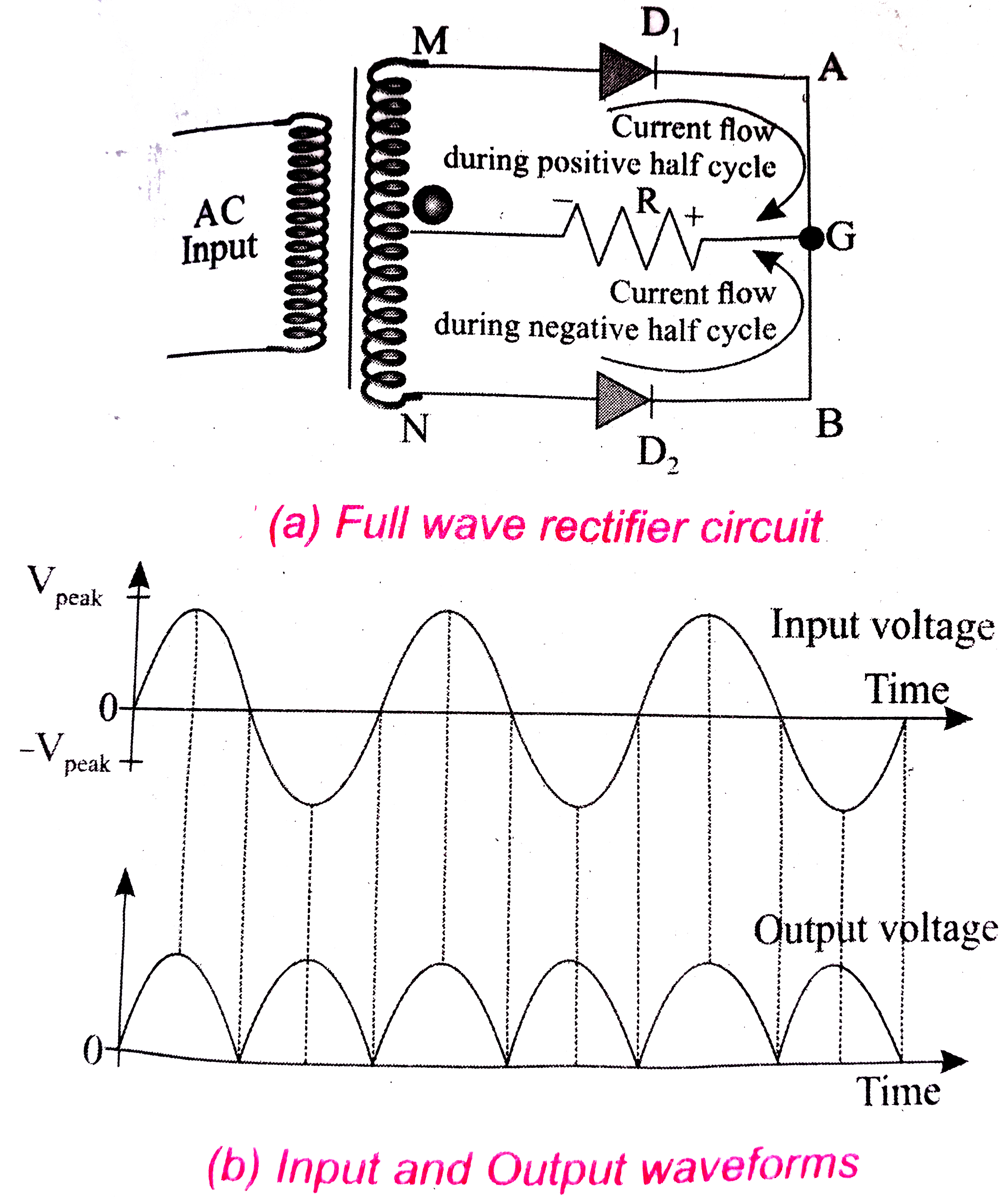Explain the construction and working of a full wave rectifier .
Text Solution
Full wave rectifier consists of two p-n junction diodes, center tapped transformer , and a load resistor (RL) . The centre is usually taken as the ground of zero voltage reference point. Due to the centre tap transformer , the output voltage rectified by each diode is only one half of the total secondary voltage .

When a positive half cycle of the AC signal passes through the circuit , theminal M is positive , G is at zero potential N is at the negative potential . This forward biases diode D1 and reverse biases diode D2 Hence D1 conducts and current flows along the path MD1 AGC . As a result , positive half cycle of the voltage appears across R1 in the direction G to C .
When the negative half cycle of the AC input signal passes through the circuit ,terminal N is positive , G is at zero potential and M is at negative potential . This forward biases diode D2 and reverse biases diode D1 . Hence , D2 conducts and current flows along the path ND2BGC. As a result , negative half cycle of the votage appears across RL in the same direction from G to C .
In a full wave rectifier both positive and negative half cycle of the input signal pass through the circuit in the same direction . The efficiency of full wave rectifier is twice that of a half wave rectifier is twice tht of a half wave rectifier and is found to be 81%.2.
|
Updated on:21/07/2023
Similar Questions
What is rectifier explain the working of junction diode as a full wave rectifier diagram
View SolutionWhat is rectifier explain the working of junction diode as a full wave rectifier diagram
View SolutionWhat is rectification Draw relevant circuit diagram and waveforms explain the working of p-n jucntion diode as a full wave rectifier
View SolutionState the advantages of full wave rectifier.
View SolutionThe output form of full-wave rectifier is
View SolutionWhat is a rectifier explain the working of P-N diode as half wave rectifier
View SolutionDraw the circuit diagram of a full wave rectifier. Explain its working showing its input and output waveforms.
View SolutionThe maximum effeciency of full wave rectifier is
View SolutionThe maximum effeciency of full wave rectifier is
View SolutionThe maximum effeciency of full wave rectifier is
View Solution

